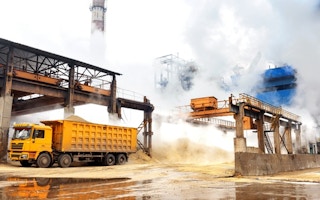The recent announcement by China to start its national emissions trading system in 2017 is a clear signal of China’s commitment to a low carbon future, said Rachel Kyte, World Bank Group Vice President and special envoy for climate change.
In an exclusive interview with Xinhua on Monday, she said that “the announcement over moving to a national carbon market sends a very important signal that after the pilots that have been operating in China, the government stands behind its decision to go national.”
“The announcement of the generosity in China in providing climate finance to developing countries is an extraordinary new development, (and is) very positively received,” she said.
The joint statement of China and the United States was issued during Chinese President Xi Jinping’s state visit to the United States, where the two sides reaffirmed their commitment to reach an ambitious agreement in 2015 that reflects the principle of common but differentiated responsibilities and respective capabilities.
“
The prices must be set in such a way that the prices reflect the ambition, that the emissions are reduced, that the poor people are treated fairly, that they are transparent and that they can be understood by the consumer.
Rachel Kyte, World Bank Group Vice President and special envoy for climate change
In the statement, China vows to start its national emissions trading system in 2017, a system that will cover key industry sectors such as iron and steel, power generation, chemicals, building materials, paper-making, and nonferrous metals.
“The announcement reaffirms the cooperation between the two largest economies. It sends a very clear signal from the president of the People’s Republic of China that he is personally driving this pathway to lower carbon growth,” said Kyte.
Kyte has been working closely with China in providing technical support.
“As China began to pilot through different ways of creating emissions trading systems or emissions reductions systems, we have, through, what is called, a partnership for market readiness, provided a mutual platform for techno-crafts from different economies in the world to share their experiences of introducing emissions trading systems so that we can all learn from each other,” she said.
“An emissions trading system has existed in Europe for some time. Now we have an auction in California. We have pilots in China. We have a trading system in Korea. Some countries are putting carbon taxes in place,” she said. “We provide a mutual technical platform to let these experiences be exchanged.”
“We have been very pleased to help other economies to learn from China’s experiences as well as to support China,” she said.
Recognizing that China’s plan for a national market shows “China is ready to learn from those pilots (projects) and move to a national system,” Kyte said that “And this will immediately create the largest carbon market in the world. Other carbon markets in the world will want to link with China. This does put China in a leadership position in helping the global economy move to low carbon growth.”
Kyte also highlighted the importance of setting the right prices in the success of a trading system.
“The prices must be set in such a way that the prices reflect the ambition, that the emissions are reduced, that the poor people are treated fairly, that they are transparent and that they can be understood by the consumer,” she said.
Speaking on the “common but differentiated responsibilities”, Kyte said that the principle is reflected in the fact that the journey towards a low carbon future means different things in different economies.
“It might mean a revolution in energy efficiency for some economies, for other economies it might mean managing the landscape in a very different way. So we have to help each economy move in the direction of low carbon and we must provide the financial resources to help economies do that, especially the poorest,” she said.
“The secretary-general has said that we are the first generation that have the chance to end poverty, and we are the last generation that have the chance to stop climate change,” she said.
“And now, in Paris, we have the first opportunity to show we are serious when we say what we have said this weekend. And we are actually moving in that direction,” she said.










